#helmetshrike
Explore tagged Tumblr posts
Text
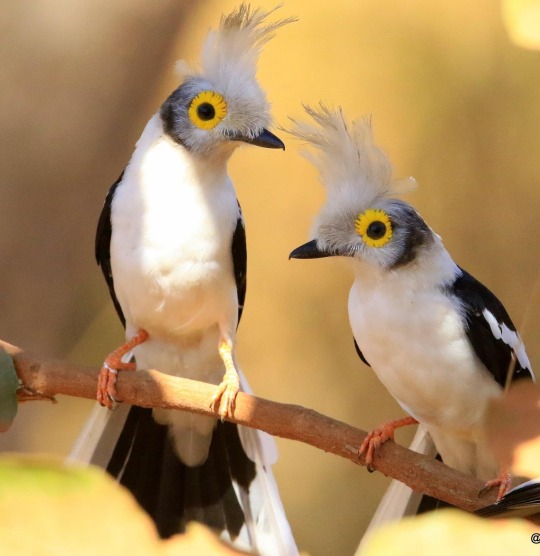
White-crested Helmetshrike (Prionops plumatus), family Vangidae, found throughout much of Africa
Photograph by ASalfa Deri
2K notes
·
View notes
Text

March 12, 2024 - Red-billed Helmetshrike or Chestnut-bellied Helmetshrike (Prionops caniceps) Found in parts of western Africa, these helmetshrikes live in and around forests, often near water. Foraging in small groups and joining mixed-species flocks, they eat insects, spiders, fruit, and seeds, capturing their prey in flight and picking it from leaves and twigs. Though their breeding habits are not known in detail, they build compact cup-shaped nests in trees, probably breed cooperatively, and may may raise two broods in a season.
#red-billed helmetshrike#helmetshrike#prionops caniceps#bird#birds#illustration#art#water#birblr art
49 notes
·
View notes
Text

White-crested Helmetshrike
#White-crested Helmetshrike#birbfest#birbfest2024#art#illustration#drawing#animals#wildlife#birds#artists on tumblr#birbs#sketchbook#sketch#artwork#colored pencils#traditional art#traditional drawing#helmetshrike
42 notes
·
View notes
Text
Round 1, Match 22 - Greater Sage-Grouse vs. Yellow-Crested Helmetshrike



All propaganda is welcome in replies/reblogs!
3 notes
·
View notes
Text
A very relatable birb
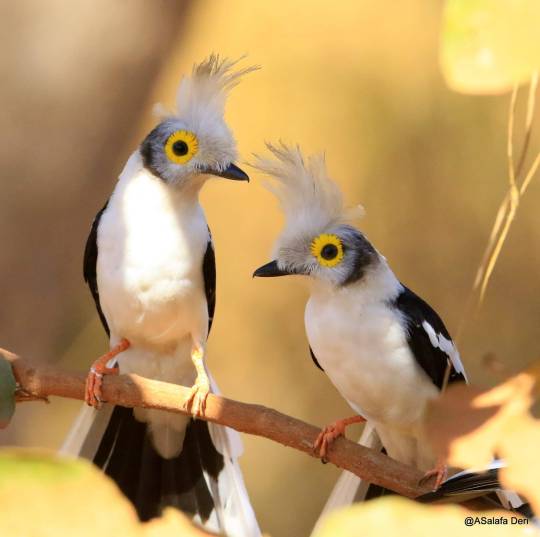
White-crested Helmetshrike (Prionops plumatus) in Senegal by ASalafa Deri.
6K notes
·
View notes
Text
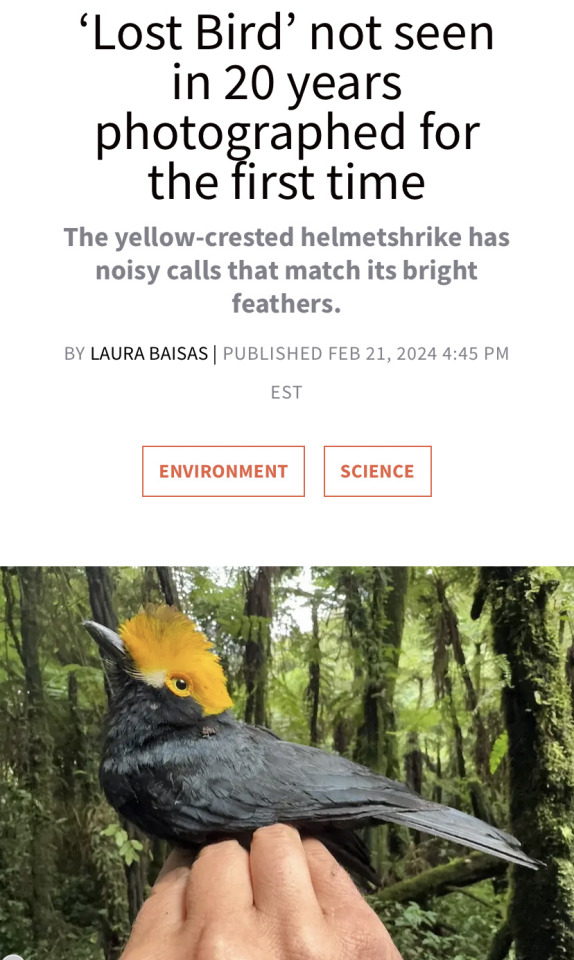
WELCOME BACK YELLOW-CRESTED HELMETSHRIKE!!!
29K notes
·
View notes
Photo

Gabela Helmetshrike (Prionops gabela)
© Shailesh Pinto
273 notes
·
View notes
Text
Cool Zoology Stories of 2024
Happy new year! As we head into 2025, here's a few fun zoology highlights from the last year.

The Iberian Lynx is no longer endgangered
Species Concerned: Iberian Lynx (Lynx pardinus)
Source: Here
Image Source: Here
The International Union for the Conservation of Nature (IUCN) is the organisation responsible for compiling information on the size and trends seen in species’ wild populations and assigning them a “conservation status” based on how threatened they are determine to be. There are three increasingly concerning categories a species may be sorted into (vulnerable, endangered or critically endangered, in that order,) and while species may be classified as increasingly threatened if their populations continue to decline they can also be raised to a less threatened category should their population increase. In the summer of 2024, the IUCN made an exciting announcement; based on an assessment carried out throughout 2023 the Iberian Lynx (the most threatened of the four lynx species, and among the world’s rarest wildcats) had done just that, being upgraded to vulnerable from endangered!
Easily distinguished from other lynxes by it’s the distinctive pair of “beard-like” fur tufts on its chin, the Iberian Lynx, as its name suggests, is found only in the southern Iberian Peninsula which stretches across Spain and Portugal. Its already small range has shrunk further due to rapid declines in its primary prey, the European Rabbit (Oryctolagus cuniculus), further aggravated by habitat loss, disease outbreaks, conflict with humans and the addition genetic pressures that species with small populations experience. By 2001 the species’ population had declined to as few 62 adults, but since then intensive efforts to increase the populations of European Rabbits, protect remaining Iberian Lynx populations, introduce captive-bred individuals and encourage land owners to reduce impacts on any lynx populations on their land has allowed for a steady increase – as of 2023 the population was believed to have risen to 648 adults, and members of this species have returned to long-vacant regions of their former range! While the Iberian Lynx remains threatened and continued efforts are needed to maintain these increases, the species’ new conservation status shows that these efforts are working, and that there may yet be hope for this beardy big cat’s future.

Big News on Baby Sharks!
Species Concerned: Great White Shark (Carcharodon carcharias)
Source: Here
Image Source: Here
Despite its large size, near-cosmopolitan distribution and status as easily one of the most famous and recognisable fish on earth, there’s a lot we don’t know about the Great White Shark. In particular, there are some major gaps in our understandings of the mating habits of adult Great Whites, and in the early development of their pups. This year, however, progress was made in filling some of these gaps; in April an article published in the journal Frontiers in Marine Science described activity within a “creche” of young (1-6 year old) Great Whites off the coast of California, demonstrating that (among other things) they moved between deeper and shallower coastal waters throughout the day and seemed to carefully position themselves within the water column in order to maintain a healthy body temperature and thereby facilitate growth and development (unlike many fish adult Great White Sharks are able to regulate their body temperature through metabolic activity much like mammals can, but it seems that younger individuals have a reduced ability to do so and are more reliant on environmental conditions to regulate their body temperatures. This is particularly exciting as an article published this January to another journal, Environmental Biology of Fishes critically examined footage recorded by wildlife photographer TheMalibuaArtist of a small, round-featured Great White Shark off also found near California’s coast that had an odd, pale film attached to its skin and concluded that (while it is possible that the film is the result of some previously undocumented disease or mutation) it may represent the first ever video footage of a newborn Great White Shark, with the film being debris that attached to the potential pup during live birth. The Great White Shark, despite its dreaded reputation, is itself classified as vulnerable by the IUCN, so gaining greater understanding of how members of these species live in their earliest years may prove invaluable in protecting wider populations!

The 200th Anniversary of the First Dinosaur Getting Named
Species Concerned: Megalosaurus (Megalosaurus bucklandii)
Source: Here
Image Source (excluding some...minor additions): Here
On February 20th 1824 the geologist and palaeontologist William Buckland became the first person to give a formal scientific name to a (non-avian) dinosaur, describing a set 160 million year old reptile-like bones found in Oxfordshire, England as “Megalosaurus”, which can be translated literally to “big lizard” (though is more often translated as the more dignified-sounding “great lizard.”) This means that this February marked the 200th anniversary of Megalosaurus getting its name and, in some ways, the beginning humanity’s long-standing love of and obsession with dinosaurs.
Based on the incomplete remains that had been discovered Buckland originally imagined Megalosaurus as being an enormous, slow-moving, lizard-like animal (kind of like an iguana crossed with an elephant.) However, further studies into the fossils of Megalosaurus and of numerous anatomically similar and therefore likely related animals have since demonstrated that it was a large, likely relatively fast-moving carnivorous biped, and a relative of modern birds (which, like Megalosaurus, are therapods.) Megalosaurus lived in what is now northern Europe throughout the mid-Jurassic period, while its closest relatives, the Megalosaurids, could also be found across Africa, Asia and North America and survived until the very end of the Jurassic. 17 years after Megalosaurus got its name it, alongside the early cretaceous ankylosaur Hylaeosaurus and the iconic spiky-thumbed ornithopod Iguanadon (all still imagined to be iguana-like at the time) would be recognised as relatives of one another based on similar anatomical features, becoming the first three genera to be classified as part of the clade that today contains all dinosaurs, the Dinosauria.

The Golden-Crested Helmetshrike was Photographed for the First Time
Species Concerned: Golden-Crested Helmetshrike (Prionops alberti)
Source: Here
Image Source: Here
Between December 2023 and January 2024 a collaborative team of researchers from the Democratic Republic of Congo and the USA set out to document the wildlife living in the Itombwe mountain region of South Kivu, DOC. Records of the species present in an around Itombwe are limited and every observation made during the trip was valuable, but perhaps the most exciting was the several sightings of the Yellow-Crested Helmetshrike, marking the first time this species has been formerly recorded in nearly 20 years and allowing for it to be photographed for the first time ever!
While several potential sightings have been reported elsewhere in central Africa, the Golden-Crested Helmetshrike is believed to be endemic to the DOC, making its home mainly in humid forests at high altitudes. Immediately distinguished from other birds in their range by the titular crests of bright yellow feathers that runs across their heads, members of this species live in small flocks and are extremely agile in flight, using their agility to hunt airborne insects. A lack of internationally available documented sightings of this species since the early 2000s had led to fears of its potential extinction, but as at least 18 individuals were sighted during the team’s expedition the species is now known not only to be surviving, but potentially to be more abundant within its home range than previously thought!

Frogs and Wolves got in on Pollination
Species Concerned: Izecksohn's Brazilian Tree Frog (Xenohyla truncata) and Ethiopian Wolf (Canis simensis)
Sources: Here and Here
Image Sources: Here and Here
Insects are by far the most important pollinators on earth (with some 80% of plants relying on insect-based pollination to reproduce,) but there are also many important vertebrate pollinators (most notably nectar-drinking bats and birds.) Pollinating vertebrates are important not only to wild plants but also to crops, wit mangos, durians and bananas all relying heavily on vertebrates to spread their pollen. 2024 saw two surprising new additions to the list of potential vertebrate pollinators; the unusual Izecksohn's Brazilian Tree Frog and the endangered Ethiopian Wolf!
Found only in Rio de Janiero, Brazil, Izecksohn's Brazilian Tree Frog is unusual among frogs in that while almost all frogs are carnivorous members of this species prominently feed on fruit and nectar. Like other nectar-feeding animals, as they move between flowers they carry pollen with them, making them the only known amphibian pollinators. The Ethiopian Wolf, native to high-altitude regions of Ethiopia, is among the rarest wild dogs on earth and has typically been thought of as a strict carnivore. In November of 2024, however, members of this species were recorded feeding on the flowers of the Red Hot Poker Plant (Kniphofia foliosa), transferring pollen on their muzzles in the process. While further studies are needed to determine quite how important either species is in pollination, it still suggests that the number of pollinating vertebrate species in the world may be greater than previously thought!
--------------------------
Have a great new year!
#Happy New Year!#zoology#biology#animal#animals#mammalogy#marine biology#ornithology#paleontology#wildlife#iberian lynx#great white shark#megalosaurus#golden-crested helmetshrike#ethiopian wolf
175 notes
·
View notes
Photo

Gabela Helmetshrike (Prionops gabela)
© Shailesh Pinto
121 notes
·
View notes
Text


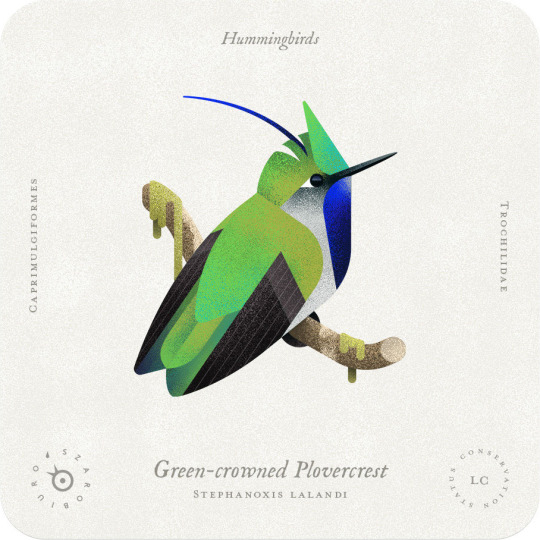

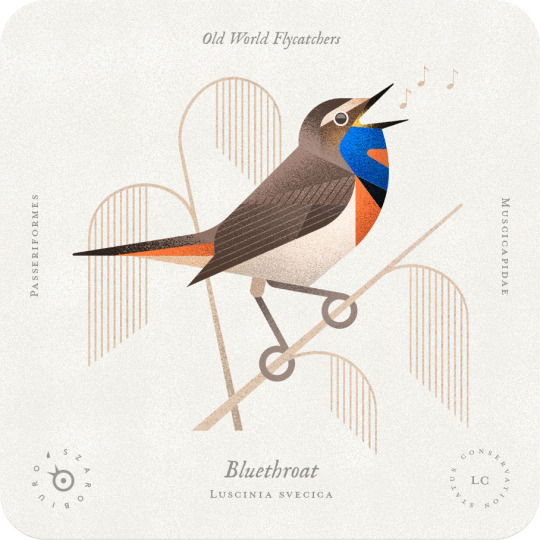
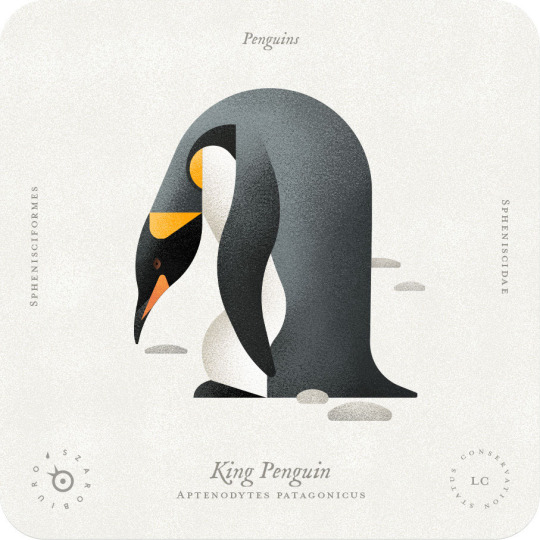
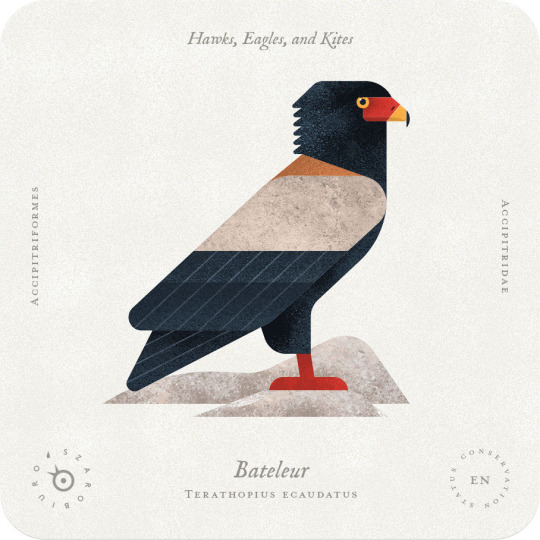
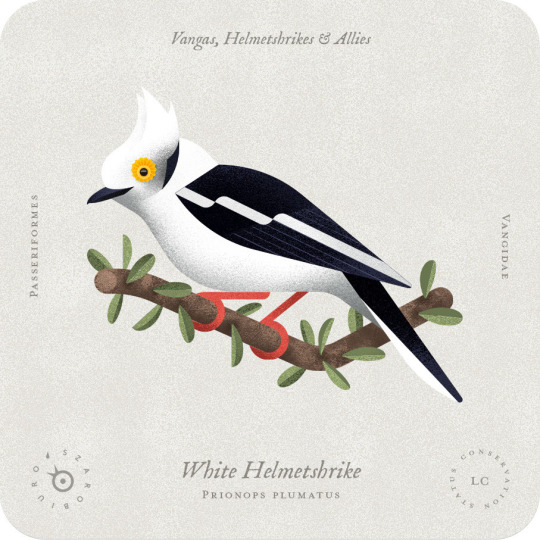


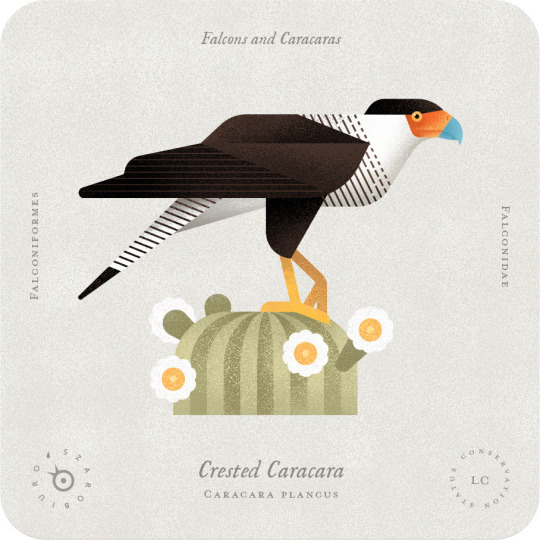


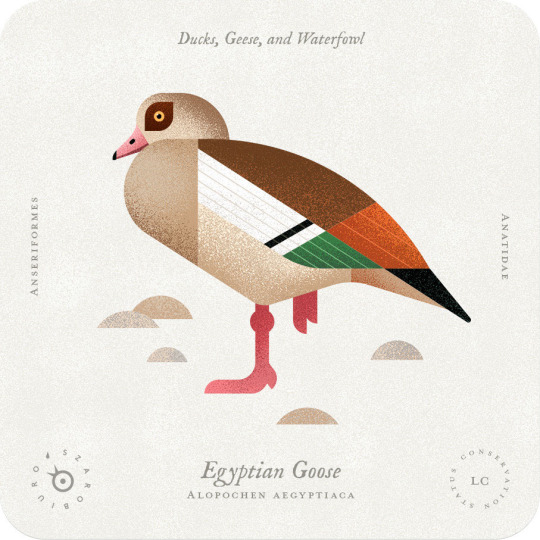
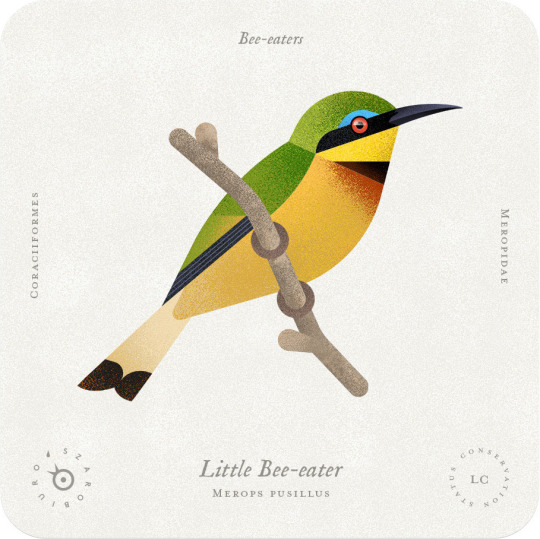


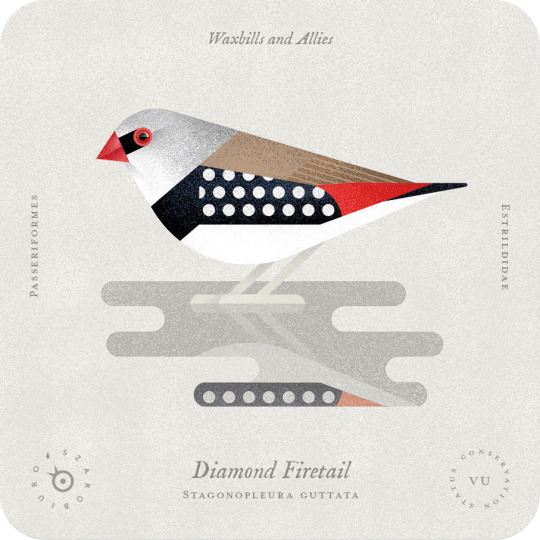
Birbfest Collection 2024, by Aga Więckowska.
#art#aga więckowska#birds#evening grosbeak#red-billed oxpecker#green-crowned plovercrest#cerulean warbler#bluethroat#king penguin#bateleur#white helmetshrike#crested caracara#papuan eclectus#violet cuckoo#egyptian goose#little bee-eater#grandala#white-browed tit-warbler#diamond firetail
141 notes
·
View notes
Photo

White-crested Helmetshrike (Prionops plumatus)
© Fikret Ataşalan
36 notes
·
View notes
Text

Yellow-crested Helmetshrike (Prionops alberti), family Vangidae, order Passeriformes, Itombwe Massif, eastern Democratic Republic of the Congo
This is the first photograph of this bird (taken recently as part of a survey in the DR Congo (January, 2024).
This bird is rarely seen, and had not been spotted by scientists for about 20 years.
18 birds were found at 3 sites in DR of Congo.
photograph by Matt Brady / The University of Texas at El Paso
Read about the exciting find, here:
https://www.utep.edu/newsfeed/2024/february/first-known-photos-of-lost-bird-captured-by-utep-scientists.html
284 notes
·
View notes
Text

August 23, 2023 - Retz's Helmetshrike (Prionops retzii) These helmetshrikes are found in woodlands, often near rivers, forests, thickets, scrub, and mangroves across parts of southern and eastern Africa. They feed on insects, such as beetles, butterflies, and termites, as well as spiders and small reptiles, foraging in flocks. Breeding pairs are usually assisted by other males and females, likely the pair’s siblings. The groups build shallow cup-shaped nests from lichen, leaf stems, grass, and thin bark, held together with spiderwebs. All group members incubate the eggs and care for the chicks.
50 notes
·
View notes
Text

Day 12 : The helmetshrike's silent song
#bleeding hearts#bird#antique art#armor#white crested helmetshrike#inktober 2024#this one was an anonymous request - thank you !
46 notes
·
View notes
Text

A group of white-crested helmetshrikes prepare to sleep in South Africa. Gary Collyer / Bird Photographer of the Year 2024
13 notes
·
View notes